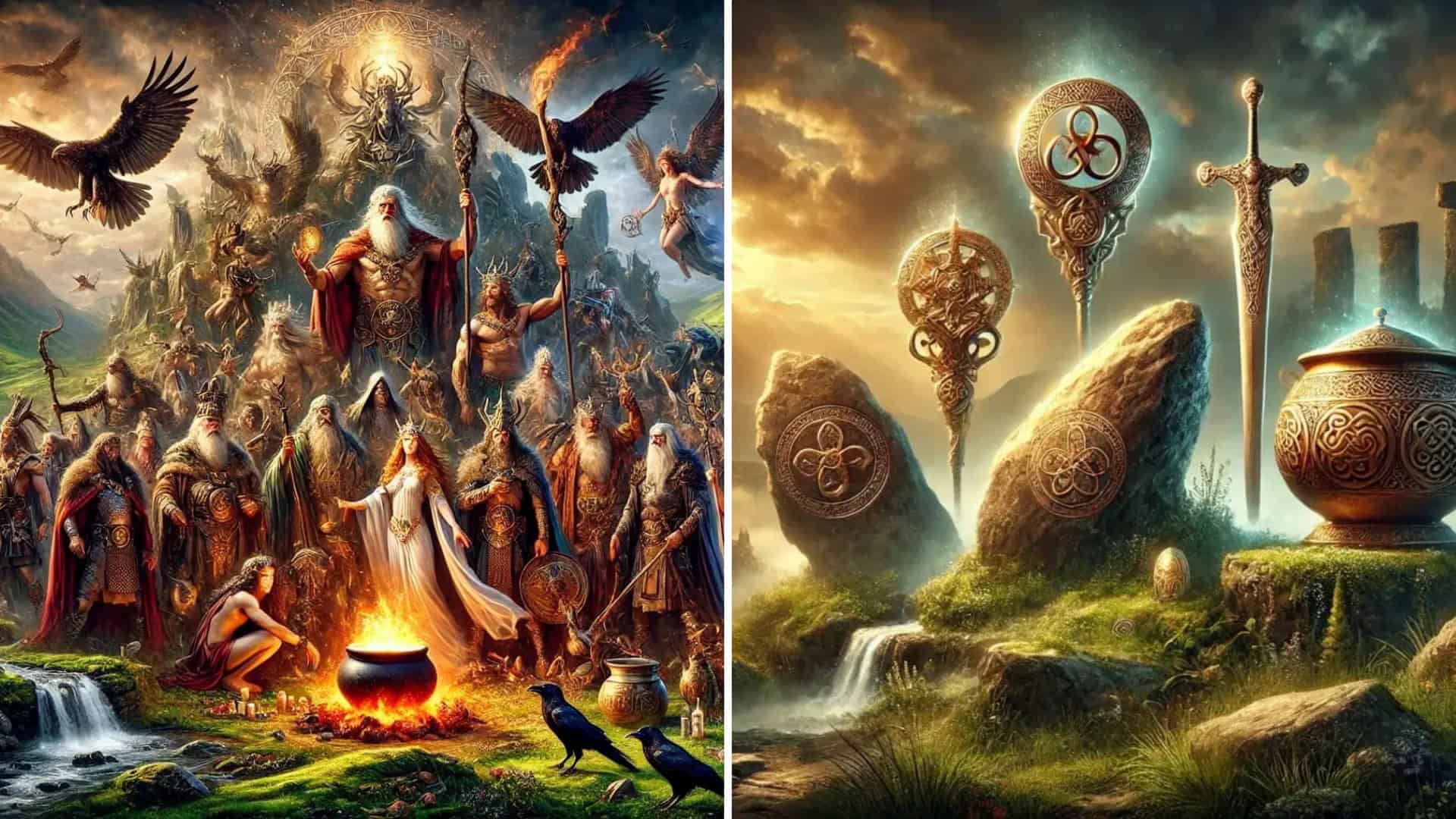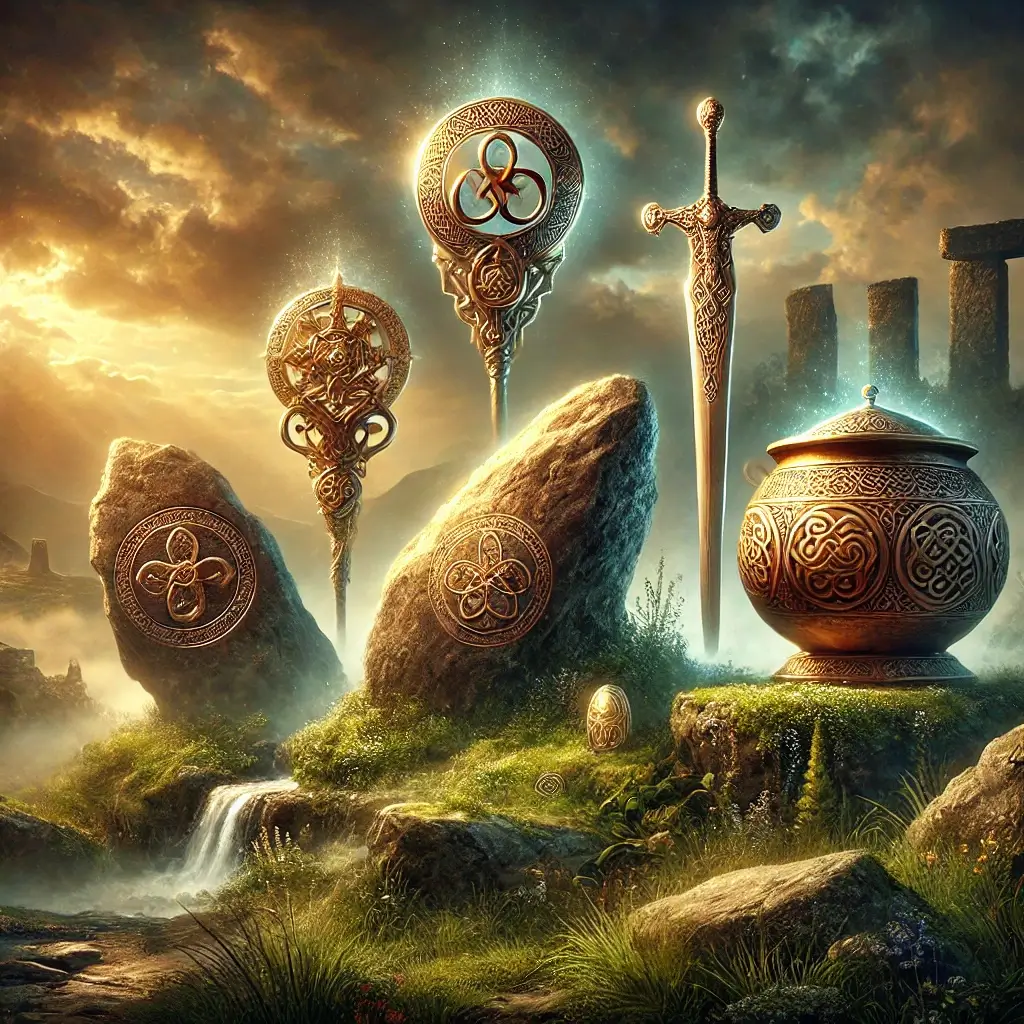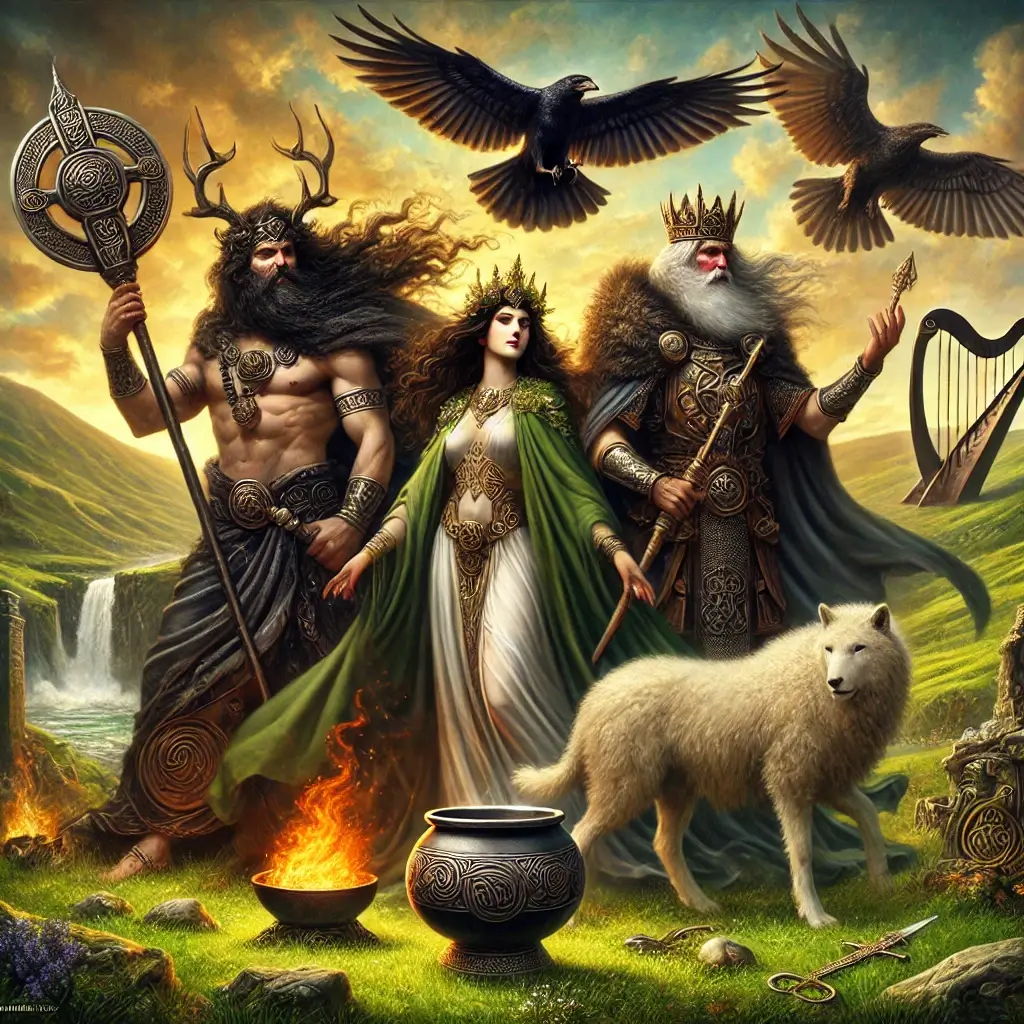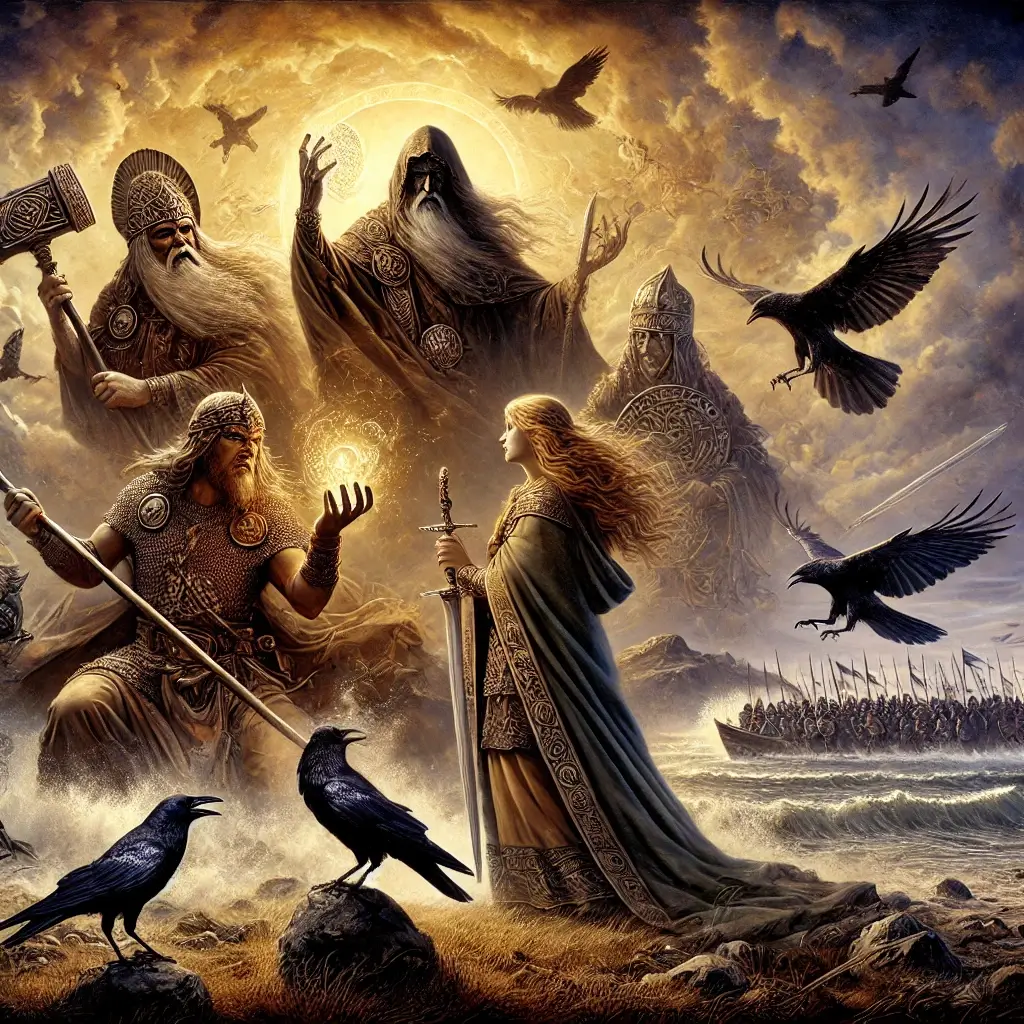No products in the cart.

The Tuatha Dé Danann are among the most celebrated figures in Celtic mythology, renowned as a supernatural race of deities and heroes with unparalleled wisdom, power, and connection to the natural and otherworldly realms. Translating to “The People of the Goddess Danu,” they are intrinsically tied to the Irish goddess Danu, their divine matron and source of their name. Their stories, preserved in Irish lore, reveal a complex society of gods and goddesses who embody the ideals of creativity, leadership, and harmony with nature.
The Tuatha Dé Danann pronunciation can seem challenging at first. Phonetically, it is pronounced as Too-ah Day Dan-ann or Thoo-ah Day Dan-an, depending on regional variations. The name literally means “The People of the Goddess Danu,” signifying their divine lineage and close association with their matron goddess.
The name Tuatha Dé Danann translates to “The People of the Goddess Danu” in English. The term “Tuatha” means “people” or “tribe,” while “Dé” refers to “god” or “deity,” and “Danann” links them to their divine matron, the goddess Danu. This name highlights their identity as a supernatural race descended from Danu, embodying wisdom, magic, and connection to the natural and spiritual realms.

The Tuatha Dé Danann are often described as a race of divine beings who arrived in Ireland from four mystical cities: Falias, Gorias, Finias, and Murias. The Tuatha Dé Danann brought four sacred treasures from the mystical cities of Falias, Gorias, Finias, and Murias. These treasures symbolise their supernatural power and connection to the divine:
These treasures reflect the Tuatha Dé Danann’s mastery over life, leadership, and the elements, solidifying their status as powerful deities in Celtic mythology.
Upon their arrival, the Tuatha Dé Danann fought to establish themselves in Ireland, engaging in legendary battles like the First and Second Battles of Moytura. They eventually became the rulers of Ireland, though their reign was later overshadowed by the Milesians, the ancestors of modern Irish people.

Dagda: Known as the “Good God,” he wields a magical club that can both take and restore life, possesses the Cauldron of Plenty that never runs empty, and a harp that controls the seasons. He symbolises fertility, leadership, and abundance.
Morrigan: The shape-shifting goddess of war, fate, and sovereignty, often associated with crows or ravens. She represents life’s cycles and the balance between war and fertility.
Brigid: Goddess of poetry, healing, and smithcraft, associated with fire and transformation. She is revered as a protector of women and children, and later syncretised with Saint Brigid in Christian tradition.
Lugh: A master of arts, crafts, and warfare, often called “Lugh of the Long Arm.” He is known for his spear, which always finds its mark, and is linked to the Lughnasadh harvest festival.
King Nuada: The first king of the Tuatha Dé Danann, famed for his Sword of Light and resilience. He lost his hand in battle but regained his kingship after it was replaced with a silver one by the healer god Dian Cecht.
Other Notable Figures: Includes Aengus Óg (god of love), Dian Cecht (healer god), Bodb Derg (leader and guide), and Ériu, Banba, and Fódla (personifications of Ireland).

The Tuatha Dé Danann were defeated by the Milesians, a group of mortal invaders from Iberia who are regarded as the ancestors of modern Irish people. According to Irish mythology, the Milesians arrived in Ireland after a series of divine invasions and confronted the Tuatha Dé Danann in a battle for dominion over the land. Their leader, Amergin, a poet and druid, played a pivotal role in negotiating and asserting the Milesians’ claim to Ireland.
The final conflict was marked by both battle and diplomacy. After fierce fighting, the Milesians and the Tuatha Dé Danann reached an agreement to divide Ireland. The Milesians were granted the physical realm above ground, while the Tuatha Dé Danann retreated to the Otherworld, an invisible, mystical plane of existence. In this retreat, the Tuatha Dé Danann transformed into the Aos Sí (pronounced ees shee), or faerie folk, continuing to influence Irish folklore as supernatural beings tied to the land and nature.
This mythological transition from the rule of the Tuatha Dé Danann to the Milesians symbolises the shift from the divine age to the mortal age in Irish lore. It reflects themes of change, continuity, and the enduring presence of the divine in the natural world, as the Tuatha Dé Danann’s legacy lived on in Irish culture and spirituality, even as mortals assumed control of the earthly realm.

Many Tuatha Dé Danann deities are linked to intricate knot designs that symbolize eternity, interconnectedness, and the infinite cycle of life. Examples include the Trinity Knot (Triquetra) for unity and Spiral Knots for transformation and spiritual growth.
Representing their roles as warriors and protectors of Ireland, weapons like the spear, sword, and shield are iconic in Tuatha Dé Danann lore. These symbols not only embody the traits of individual gods and goddesses but also reflect broader themes of Celtic spirituality, natural harmony, and mythical power.
Even after their retreat to the Otherworld following the arrival of the Milesians, the Tuatha Dé Danann continued to influence Irish culture and mythology. They were said to have become the Aos Sí, the faerie folk or spirits of Irish folklore, maintaining their connection to nature and the mystical realm.
The Tuatha Dé Danann represent the pinnacle of Celtic mythology’s creativity and depth, embodying the ideals of harmony, strength, and wisdom. Their stories offer timeless insights into the beliefs of the ancient Celts and remain an enduring part of Ireland’s cultural identity.
















